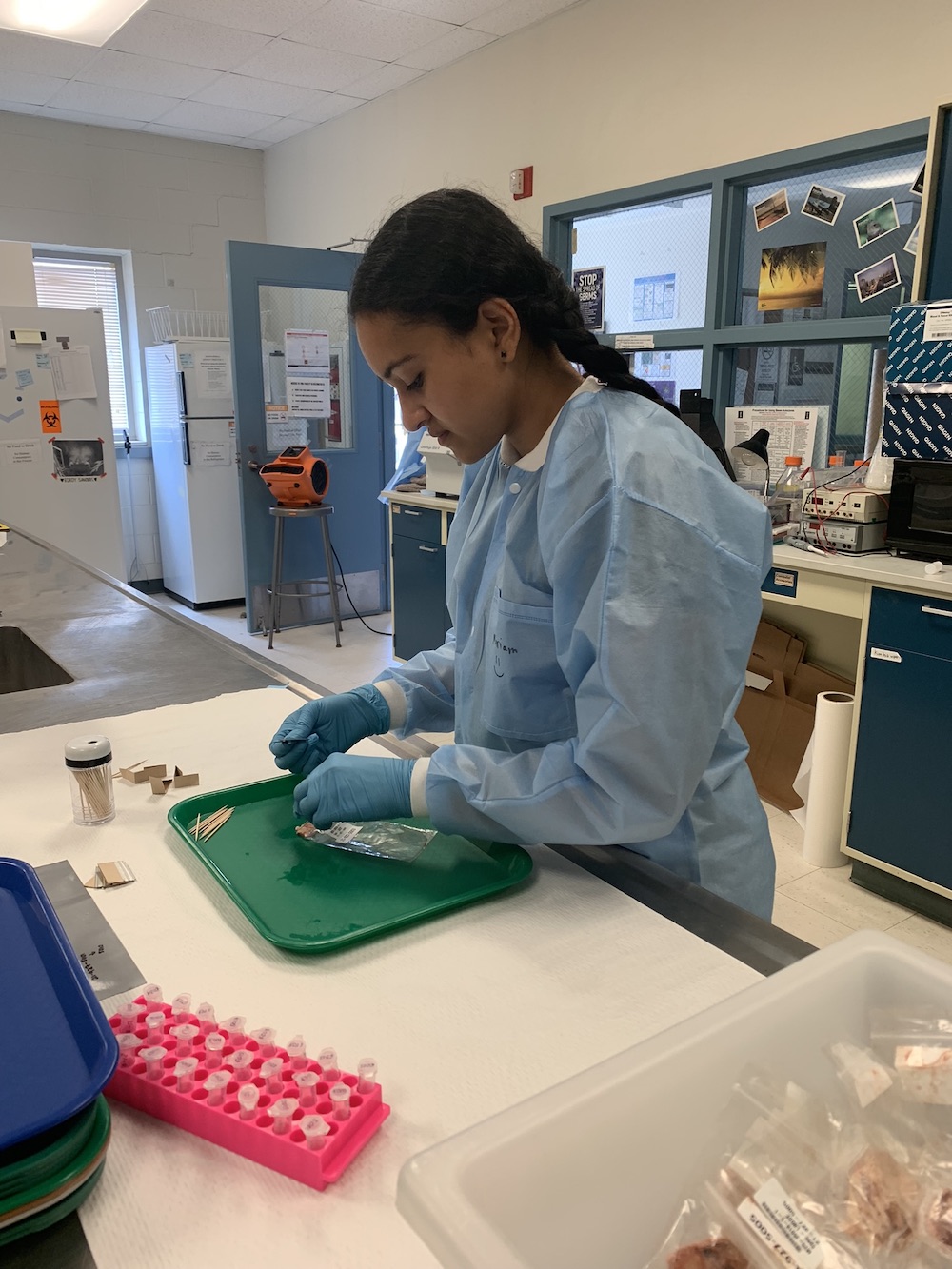
Photo courtesy of the Illinois Department of Natural Resources.



Photo courtesy of the Illinois Department of Natural Resources.

Science has always been a part of who I am. Learning about millions of light-years away galaxies and decoding the complexity of the weather above us have all intrigued me. Yet, nothing quite instills in me wonder and curiosity like the science of the biosphere has. From the tiniest microbes to the giants of the deep sea, studying wildlife and the ecological relationships between them has been a life goal of mine. In recent years, I have become captivated with exploring the relationship between infectious disease and wildlife ecology as it sits at the intersection of many scientific fields. This is what piqued my interest upon learning about the Summer Research Opportunities Program (SROP) this past spring.
As a junior at Southern Illinois University, Edwardsville, I was already looking for a way to gain more laboratory and field experience. The opportunity to work in Dr. Nohra Mateus-Pinilla’s laboratory on Chronic Wasting Disease (CWD) in wild white-tailed deer felt like destiny. I applied immediately and was beyond excited when I was chosen for the internship. Throughout the program, I gained a wealth of knowledge on laboratory techniques and procedures — from tissue processing to DNA extraction, gel electrophoresis and DNA sequence analysis (Figure 1). This internship allowed me to have hands-on experience in critical laboratory operations ranging from data entry, management and sample cataloging to writing laboratory protocols and coordinating experiments. Moreover, I was able to put these tools and methods to use and worked closely with my lab mates and advisors to generate new data for the laboratory as a whole and conduct my own research project.

As part of my internship, I was tasked with formulating original research and presenting it at the Illinois Summer Research Symposium (Figure 2). Through this, I got a real taste of what graduate education is like. Learning how to collect and present my own data professionally and in multiple formats was invaluable for graduate school preparation. My research focused on describing the PRNP gene haplotypes of southern Illinois wild white-tailed deer populations. The PRNP gene is the gene that encodes for the prion protein—the misfolded form of the prion protein is the cause of Chronic Wasting Disease (Figure 3). CWD is always deadly for cervids. In Illinois, it affects wild white-tailed deer, a public natural resource of the state. From previous research on northern Illinois deer, we learned that certain haplotypes or versions of this gene confer resilience or susceptibility to CWD. By studying the proportion of resilient or susceptible haplotypes in a deer population, we can begin to make predictions about that population’s vulnerability to CWD. This is especially important for southern Illinois deer populations because although CWD has remained relegated to the northern half of the state, the spread of CWD in bordering states threatens the health and conservation of this natural resource.
While more research is needed, the research project I was able to conduct did show a higher proportion of resilient haplotypes in two of the three counties sampled (Figure 2). To be at the forefront of research like this and work with experts in the field of wildlife epidemiology was an opportunity that has cemented that this is where I’m meant to be. I hope to continue working with Dr. Mateus and the rest of my friends and colleagues at the Wildlife Veterinary Epidemiology Laboratory at the Illinois Natural History Survey of the University of Illinois (UIUC). In addition, I hope to continue my education in wildlife epidemiology to protect wildlife and its conservation needs, while helping keep people safe from zoonotic diseases.

For others who might be interested in a career studying infectious disease and wildlife, I cannot recommend this experience enough. It truly has opened doors for the next chapter in my life and opened my mind to all the possibilities that come with being a laboratory scientist and working with a multidisciplinary team. The laboratory techniques I learned this summer are skills I will carry with me for the rest of my career. The diversity of people in my program not only further instilled an appreciation for all academic disciplines, but also allowed me to work with and alongside people outside of my field of interest, which is vital for interdisciplinary and applied research. Last but not least, the support from my mentors and the program has allowed me to find a path to the career of my dreams.
Miriam Schlessinger is a Panamanian-American currently in her junior year at Southern Illinois University, Edwardsville. She is majoring in integrative biology with a keen interest in infectious disease and ecology. In addition, she enjoys reading, cooking and historical documentaries in her free time. Schessinger would like to acknowledge Nelda Rivera, Evan London, Jan Novakofski and Nohra Mateus-Pinilla who mentored her during her time with the Summer Research Opportunities Program.
Submit a question for the author
Question: Great research project. I am in Wa state. CWD observed several yrs ago, now not obvious but fewer deer.